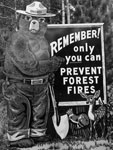(Note: By the completion of eighth grade, Iowa students are expected to master the following standards.)
Subject: Behavioral Sciences
Behavioral sciences include, but are not limited to, the areas of sociology, anthropology and psychology. In addressing these disciplines the actions and reactions of humans are studied through observational and experimental methods.
Essential Concept and/or Skill:
Understand the changing nature of society.
-
Understand that a large society may be made up of many groups, and these groups may contain many different subcultures.
-
Understand various institutions influence people.
-
Understand various institutions influence elements of culture.
-
Understand that technology is important in spreading the ideas, values, and behavior patterns within a society.
-
Understand the role of institutions in furthering both continuity and change.
-
Understand the means by which individuals, groups, and institutions may contribute to social continuity and change within a community.
Essential Concept and/or Skill:
Understand how personality and socialization impact the individual.
-
Understand the ways family, gender, ethnicity, nationality, socioeconomic factors and institutional affiliations contribute to personal identity.
-
Understand the influence of perception, attitudes, values, and beliefs on personal identity.
Essential Concept and/or Skill:
Understand the influences on individual and group behavior and group decision making.
-
Understand that various factors affect decisions that individuals make.
-
Understand role, status, and social class affect interactions of individuals and social groups.
-
Understand that each culture has distinctive patterns of behavior that are usually practiced by most of the people who grow up in it.
-
Understand that standards used to judge behaviors vary for different settings and societal groups.
-
Understand that technology is important in spreading ideas, values, and behavior patterns within a society and among different societies.
-
Understand that the media may influence the behavior and decision-making of individuals and groups.
Essential Concept and/or Skill:
Understand the process of how humans develop, learn, adapt to their environment, and internalize their culture.
-
Understand that all behavior is affected by both inheritance and experience
-
Understand values, language, beliefs, and behaviors contribute to the transmission of culture.
-
Understand that language and tools enable human beings to learn complicated and varied things from others.
-
Understand that technology is important in spreading the ideas, values, and behavior patterns within a society.
Essential Concept and/or Skill:
Understand current social issues to determine how the individual is able to formulate opinions and respond to those issues.
-
Understand that personal values influence the types of conclusions people make.
-
Understand the concepts of bias, prejudice, stereotyping, power, role, status, justice.
-
Understand group and institutional influences on people, events, and elements of culture.
Essential Concept and/or Skill:
Understand how to evaluate social research and information.
-
Understand that human behavior is studied using scientific methods.
-
Understand basic distinctions between information that is based on fact and information that is based on opinion.
Subject: Economics
Economics addresses the production, distribution, and consumption of goods and services. The concept of scarcity is understood to mean that available resources are insufficient to satisfy the wants and needs of everyone. Economics is therefore founded upon the alternative use of available resources and the study of choices.
Essential Concept and/or Skill:
Understand the role of scarcity and economic trade-offs and how economic conditions impact people's lives.
-
Understand the cost and benefits of economic trade-offs and how scarcity of resources affects costs and benefits.
-
Understand economic trade-offs at different levels (personal, business, local government).
-
Understand the short term and long term impact of economic trade-offs on society.
Essential Concept and/or Skill:
Understand the functions of economic institutions.
-
Understand the services that are available at banks and credit unions.
-
Understand the process of interests and payments for goods.
-
Understand the role banks play among savers, borrowers, and investors.
-
Understand the types of specialized economic institutions found in market economies (corporations, partnerships, cooperatives, labor unions, banks, and nonprofit organizations).
Essential Concept and/or Skill:
Understand how governments throughout the world influence economic behavior.
-
Understand goods and services that the government provides.
-
Understand the government's purpose in preventing monopolies.
-
Understand how taxes are used at the local, state, and national levels.
-
Understand revenues and expenditures in the federal budget.
-
Understand the concepts of balanced budget, budget deficit, budget surplus, and national debt.
-
Understand the role of the Federal Reserve on the economy.
-
Understand the process of filing personal tax returns.
Essential Concept and/or Skill:
Understand factors that create patterns of interdependence in the world economy.
-
Understand the impact of imported and exported goods and services in the local community.
-
Understand the concepts of free trade and trade barriers.
-
Understand trade barriers imposed by the United States from a historical perspective and the impact of those actions.
-
Understand the interdependence of America and other regions of the world in terms of imports and exports.
-
Understand balance of trade and trade deficits and their impact on the price of goods.
-
Understand that the increased interdependence of the world market causes economic conditions in one country to affect others.
Essential Concept and/or Skill:
Understand the impact of advancing technologies on the global economy.
-
Understand the evolution of technology over time.
-
Understand the role of technologies that interlock the global economy.
-
Understand the role of investment and government support in advancing technologies.
Essential Concept and/or Skill:
Understand how universal economic concepts present themselves in various types of economies throughout the world.
-
Understand the different types of economies and universal economic concepts (supply and demand, production, consumption, labor, capital, etc.) and their influence on each other.
-
Understand how the laws of supply and demand affect price and consumers' responses to prices.
-
Understand how the change of price for one good or service can affect the price for other goods and services.
-
Understand causes of inflation, deflation, and recessions and who gains or loses from them.
-
Understand the relation between gross domestic products and standards of living among countries.
-
Understand unemployment.
-
Understand the role of profit in motivating entrepreneurs in starting new businesses.
Essential Concept and/or Skill:
Understand the function of common financial instruments.
-
Understand checking accounts.
-
Understand that bank accounts, loans and other services vary from one bank to another.
Subject: Geography
Geography is the study of the interaction between people and their environments. Geography therefore looks at the world through the concepts of location, place, human-environmental interaction, movement, and region.
Essential Concept and/or Skill:
Understand the use of geographic tools to locate and analyze information about people, places, and environments.
-
Understand the characteristics and purposes of geographic tools and representations of the earth such as maps, globes, graphs, charts, models, grid systems, aerial and other photographs, GIS, satellite-produced images and databases.
-
Understand mental maps of locales, regions and the world.
-
Understand geographic relationships such as population density and spatial distribution patterns.
Essential Concept and/or Skill:
Understand how geographic and human characteristics create culture and define regions.
-
Understand human and physical characteristics of place.
-
Understand the concept of region.
-
Understand the physical environment affects life in different regions.
-
Understand communities reflect the cultural backgrounds of their inhabitants.
-
Understand patterns of cultural diffusion.
Essential Concept and/or Skill:
Understand how human factors and the distribution of resources affect the development of society and the movement of populations.
-
Understand physical and cultural patterns and their interactions, such as land use, settlement patterns, cultural transmission of customs and ideas, and ecosystem changes.
-
Understand world patterns of resource distribution and utilization.
-
Understand the role of technology in resource acquisition and use, and its impact on the environment.
-
Understand the development and widespread use of alternative energy sources have an impact on societies.
-
Understand physical and human geographic factors have influenced major historic events and movements.
Essential Concept and/or Skill:
Understand how physical processes and human actions modify the environment and how the environment affects humans.
-
Understand human systems develop in response to conditions in the physical environment.
-
Understand major processes that shape patterns in the physical environment.
-
Understand the environmental consequences of both the unintended and intended outcomes of major technological changes in human history.
-
Understand technology influences the human capacity to modify the physical environment.
-
Understand the environmental consequences of people changing the physical environment.
-
Understand ecosystems in terms of their characteristics and ability to withstand stress caused by physical events.
Subject: History
History is the study and analysis of the past. Built upon a foundation of historical knowledge, history seeks to analyze the past in order to describe the relationship between historical facts, concepts, and generalizations. History draws upon cause and effect relationships within multiple social narratives to help explain complex human interactions. Understanding the past provides context for the present and implications for the future.
Essential Concept and/or Skill:
Understand historical patterns, periods of time and the relationships among these elements.
-
Understand concepts such as chronology, causality, change, conflict, and complexity.
-
Understand historical periods and patterns of change within and across cultures, such as the rise of civilizations, the development of transportation systems, the growth and breakdown of colonial systems, and others.
Essential Concept and/or Skill:
Understand how and why people create, maintain or change systems of power, authority, and governance.
-
Understand political events that shaped the development of governments.
-
Understand patterns of nationalism, state-building, religious and social reform.
Essential Concept and/or Skill:
Understand the role of culture and cultural diffusion on the development and maintenance of societies.
-
Understand ways groups, societies, and cultures have met human needs and concerns in the past.
-
Understand how information and experiences from the past may be interpreted by people from diverse cultural perspectives and frames of reference.
-
Understand language, literature, the arts, architecture, other artifacts, traditions, beliefs, values, and behaviors have contributed to the development and transmission of culture.
Essential Concept and/or Skill:
Understand the role of individuals and groups within a society as promoters of change or the status quo.
-
Understand that specific individuals and the values those individuals held had an impact on history.
-
Understand significant events and people, including women and minorities, in the major eras of history.
Essential Concept and/or Skill:
Understand the effect of economic needs and wants on individual and group decisions.
-
Understand economic concepts that help explain historical and current developments and issues in local, national, or global contexts.
-
Understand reform, revolution, and social change in the world economy.
Essential Concept and/or Skill:
Understand the effects of geographic factors on historical events.
-
Understand that historical events have been influenced by, and have influenced, physical and human geographic factors in local, regional, national, and global settings.
-
Understand the forces of cooperation and conflict that shaped the divisions of Earth's surface.
-
Understand geography is used to interpret the past.
Essential Concept and/or Skill:
Understand the role of innovation on the development and interaction of societies.
-
Understand technology has influenced the course of history through revolutions in agriculture, manufacturing, sanitation, medicine, warfare, transportation, information processing, and communication.
-
Understand the impact of new inventions and technological developments in various regions of the world.
Essential Concept and/or Skill:
Understand cause and effect relationships and other historical thinking skills in order to interpret events and issues.
-
Understand processes such as using a variety of sources, providing, validating, and weighing evidence for claims, checking credibility of sources, and searching for causality.
-
Understand relationships between and among significant events.
-
Understand facts and concepts drawn from history, along with methods of historical inquiry, to inform decision-making about and action-taking on public issues.
-
Understand how and why events may be interpreted differently depending upon the perspectives of participants, witnesses, reporters, and historians.
Subject: Political Science/Civic Literacy
Political science is the study of power and authority through the examination of political processes, governmental institutions, and human behavior in a civil society. In this context the study of civics is understood to include the form and function of government. Civic literacy encompasses civics but also addresses the individual’s social and political participation.
Essential Concept and/or Skill:
Understand the rights and responsibilities of each citizen and demonstrate the value of lifelong civic action.
-
Understand rights, roles and status of the individual in relation to the general welfare.
-
Understand issues regarding personal, political, and economic rights.
-
Understand what is meant by the "scope and limits" of a right.
-
Understand participation in civic and political life can help bring about the attainment of individual and public goals.
-
Understand the functions of political leadership and why leadership is a vital necessity in a democracy.
-
Understand the importance of voluntarism as a characteristic of American society.
Essential Concept and/or Skill:
Understand how the government established by the Constitution embodies the principles of democracy and republicanism.
-
Understand the essential ideas of American government that are expressed in the Declaration of Independence, the Constitution, and other documents.
-
Understand the concepts of constitutional government as fundamental principles of American democracy.
-
Understand the essential characteristics of limited and unlimited governments.
-
Understand the basic concepts of a federal system of government.
-
Understand values such as individual rights, the common good, self government, justice, equality, diversity, openness and free inquiry, truth, patriotism are fundamental to American public life.
-
Understand the type of citizenry needed to establish and maintain constitutional government.
Essential Concept and/or Skill:
Understand the purpose and function of each of the three branches of government established by the Constitution.
-
Understand the primary responsibilities of each branch of government in a system of shared powers (legislative, executive, judicial) and ways in which each branch shares the powers and functions of the other branches.
-
Understand how the legislative, executive, and judicial branches use checks and balances.
Essential Concept and/or Skill:
Understand the similarities and differences among the complex levels of local, state and national government.
-
Understand the relationship between state and local governments and the national government.
-
Understand the powers and responsibilities of local, state and national governments.
Essential Concept and/or Skill:
Understand strategies for effective political action that impacts local, state and national governance.
-
Understand the concept of civic responsibility.
-
Understand the importance of political leadership, public service, and a knowledgeable citizenry in American democracy.
-
Understand the concept of political leadership in the student’s own school, community, state, and the nation.
Essential Concept and/or Skill:
Understand how laws are established at the local, state and national levels.
-
Understand the concept of public policy.
-
Understand the sources, purposes, and functions of law, and the importance of the rule of law for the protection of individual rights and the common good.
Essential Concept and/or Skill:
Understand how various political systems throughout the world define the rights and responsibilities of the individual.
-
Understand constitutions protect individual rights and promote the common good.
-
Understand the essential characteristics of limited and unlimited governments.
Essential Concept and/or Skill:
Understand the role of the United States in current world affairs.
-
Understand conditions, actions and motivations that contribute to conflict and cooperation within and among nations.
-
Understand current foreign policy issues and the means the United States is using to deal with them.

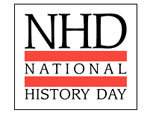
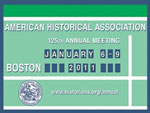
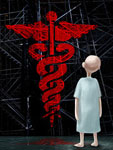

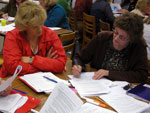
 Maybe you have a presidential library and museum nearby, providing educators with workshops on using archival resources. Or a local university that offers professional development courses for teachers (such as the
Maybe you have a presidential library and museum nearby, providing educators with workshops on using archival resources. Or a local university that offers professional development courses for teachers (such as the 